Vatsal Shah
Certified ScrumMaster® | Agile Technical Project Manager
Agile Transformation in IT Project Management: A Blueprint for Success in the Digital Age

Introduction
In today’s fast-paced digital world, IT project management is undergoing a revolution. Agile methodology, originally designed to enhance software development, has now become essential for managing complex IT projects. The need for faster delivery, adaptability to change, and cross-functional collaboration has made Agile transformation crucial for businesses aiming to stay competitive. According to recent statistics, over 70% of companies have adopted Agile practices to increase their project success rates and better respond to market demands.
Understanding Agile Transformation
Agile transformation goes beyond just implementing Agile practices in IT projects. It’s a comprehensive shift in mindset, culture, and processes that allows organizations to respond quickly to changes. Unlike traditional Agile implementation, which may only involve specific teams or departments, Agile transformation affects the entire organization, driving collaboration and innovation across all levels.
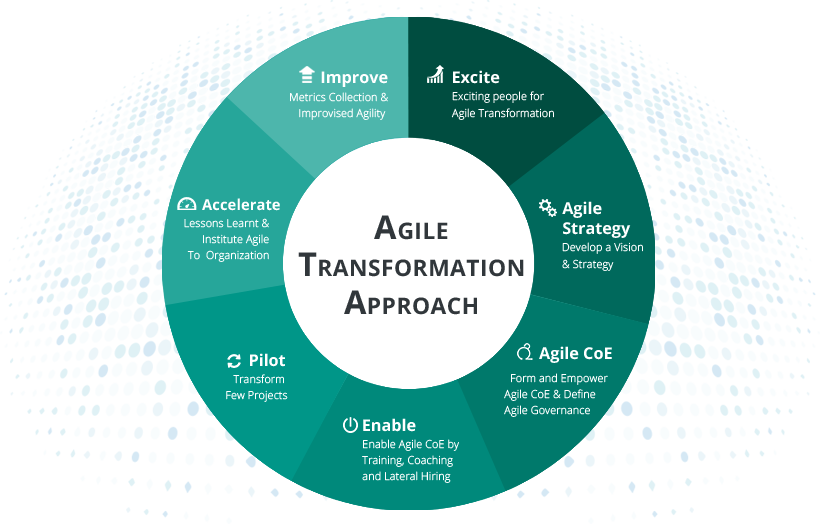
Key benefits for IT organizations include improved project delivery speed, better adaptability, and increased customer satisfaction.
Key Drivers for Agile Transformation in IT
Several key factors are driving Agile transformation in the IT industry:
- Digital Disruption and Innovation: Rapid technological advancements force IT teams to continuously innovate and adapt.
- Client Demands: Customers now expect faster delivery times and greater flexibility in project requirements.
- Cross-Functional Teams: Agile encourages collaboration across departments, breaking down silos and enabling faster decision-making.
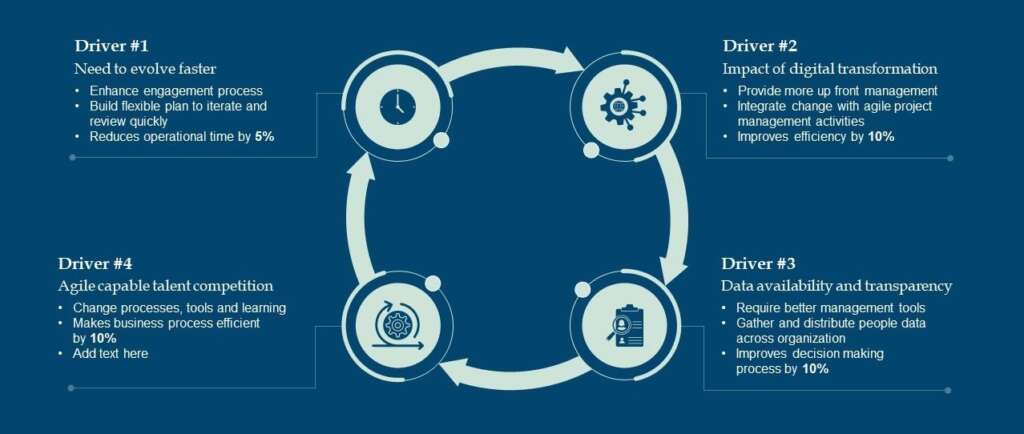
Why Agile Transformation is Essential in IT Project Management
The IT landscape is changing at a rapid pace. Agile methodologies provide the flexibility needed to keep up with evolving technology and shifting market demands. Unlike traditional Waterfall approaches, which involve rigid project plans and higher risks of failure, Agile allows teams to pivot and adapt based on feedback and changing requirements.
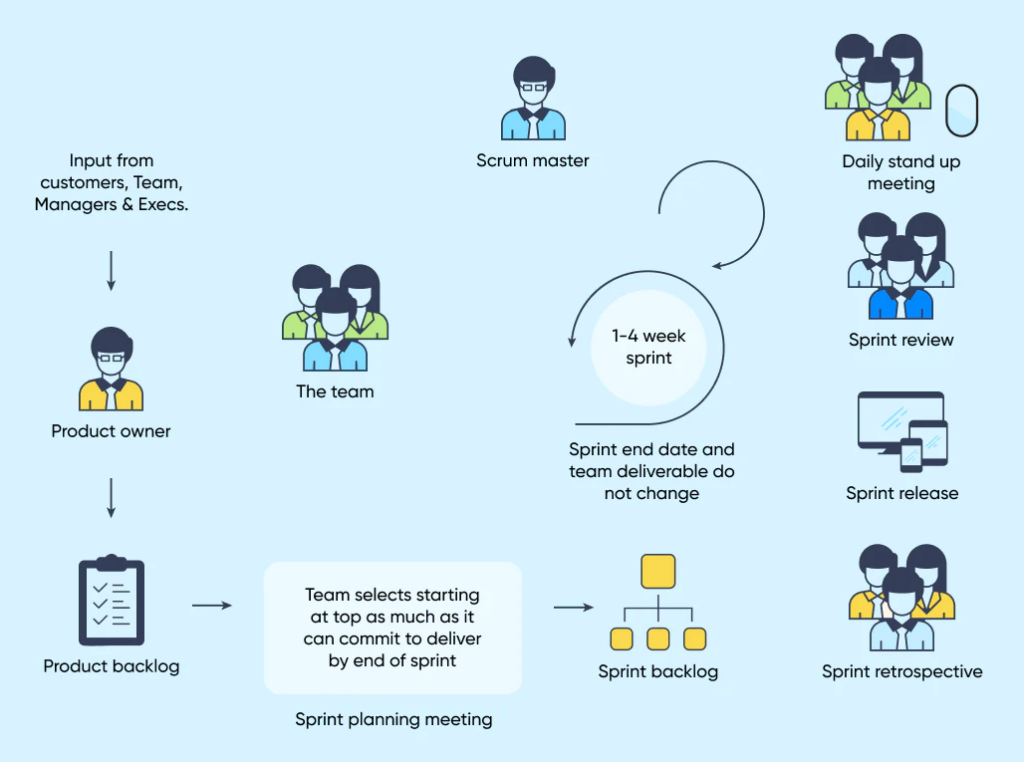
Case Studies: Companies like Spotify and IBM have successfully implemented Agile transformations, seeing improvements in delivery speed, customer satisfaction, and overall project success.
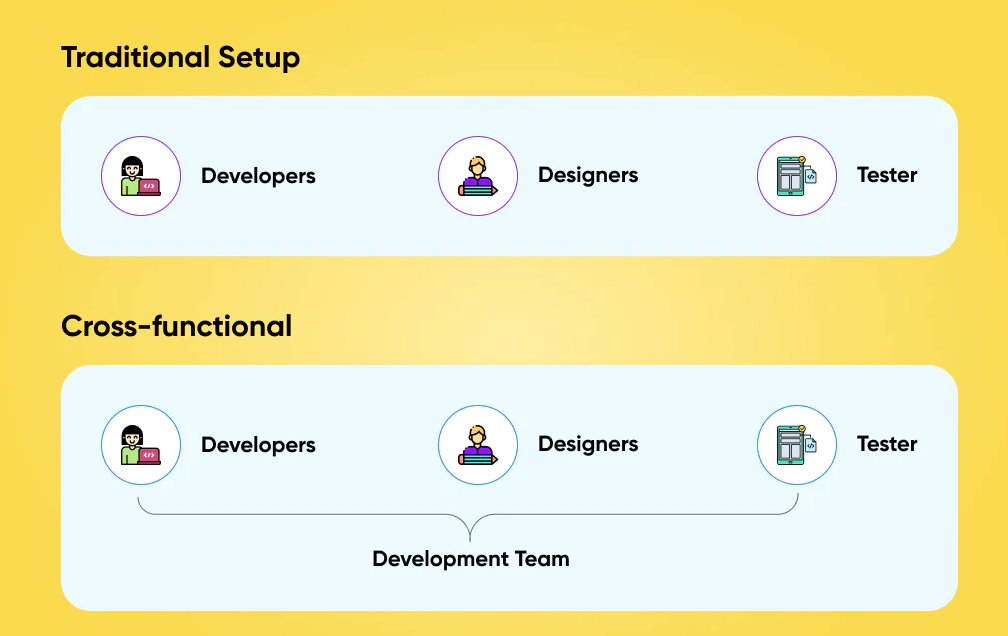
Steps to Successfully Implement Agile in IT Project Management
Successfully implementing Agile in IT projects requires a structured approach:
- Assess the Current State: Evaluate the organization’s current processes and identify areas for improvement.
- Build an Agile Culture: Foster a mindset shift where teams embrace continuous improvement, collaboration, and adaptability.
- Choose the Right Framework: Popular Agile frameworks include Scrum and Kanban. Select the one that best fits your team’s needs.
- Implement Continuous Integration and Feedback Loops: Adopt a cycle of frequent testing, integration, and customer feedback to ensure consistent progress.
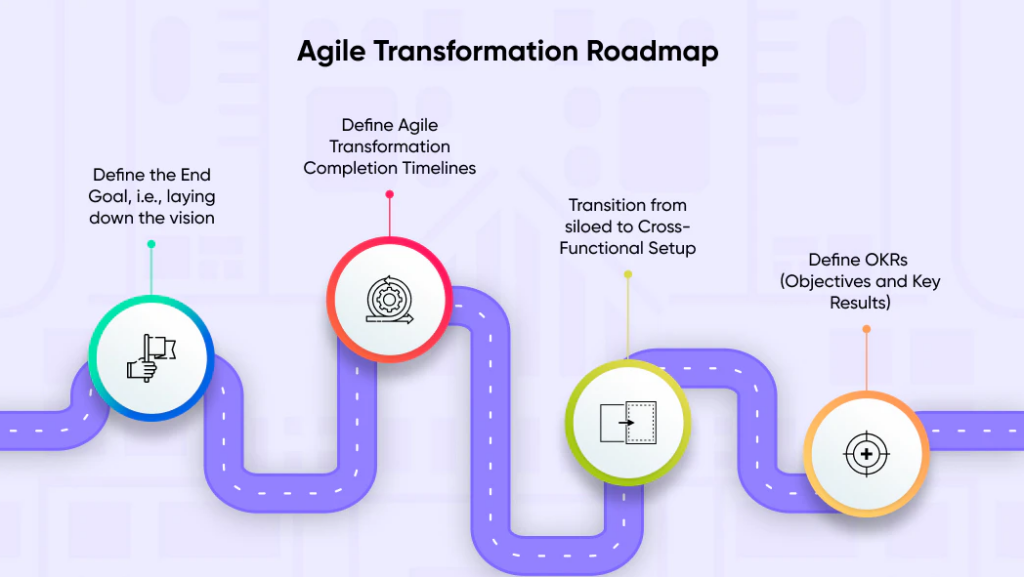
Common Challenges in Agile Transformation for IT Projects
Agile transformation comes with its challenges, such as:
- Resistance to Change: Both team members and leadership may struggle with adopting new methods and mindsets.
- Legacy Systems: Aligning Agile processes with older systems and frameworks can be difficult.
- Training and Coaching: A lack of proper training in Agile practices can lead to misalignment and ineffective project execution.
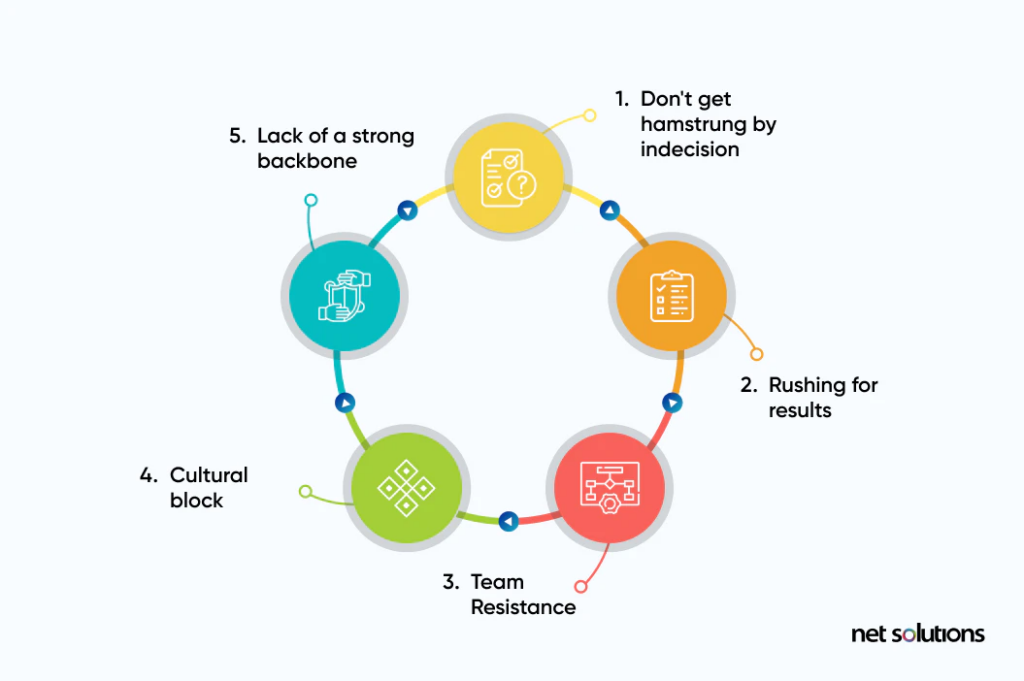
Role of Agile Tools and Technology in IT Projects
Agile project management relies heavily on the right tools to ensure seamless collaboration and tracking. Tools like Jira, Trello, and Asana help manage sprints, track tasks, and integrate with DevOps pipelines to ensure smooth and continuous delivery.
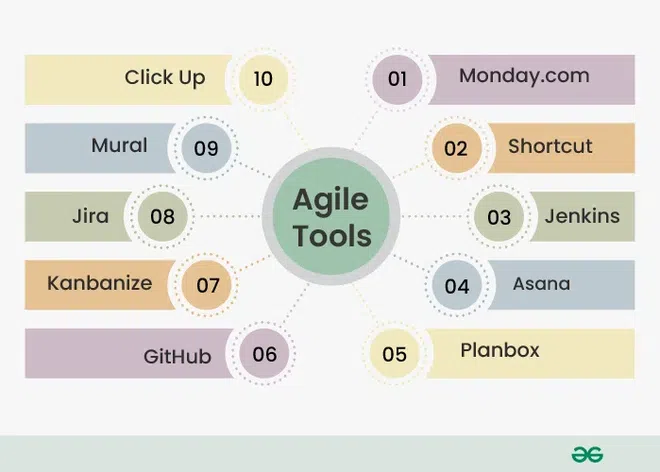
Agile Metrics to Measure Success in IT Projects
To gauge the success of Agile transformation, organizations must track specific metrics, including:
- Velocity: Measures how much work is completed in a given sprint.
- Sprint Burndown: Tracks progress toward sprint goals.
- Business Impact: Assesses the overall value delivered to the organization through Agile practices.
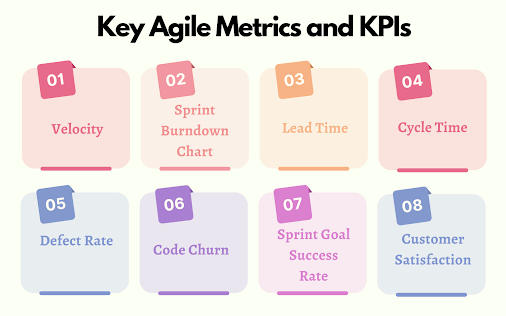
Best Practices for Agile Transformation
Here are some best practices for a successful Agile transformation:
- Start Small: Implement Agile in smaller teams or projects before scaling across the organization.
- Utilize Agile Frameworks: Use popular frameworks like Scrum or Kanban for structured implementation.
- Measure and Track Progress: Regularly review metrics to assess the transformation’s success.
- Address Challenges: Continuously tackle challenges related to culture, processes, and tools.
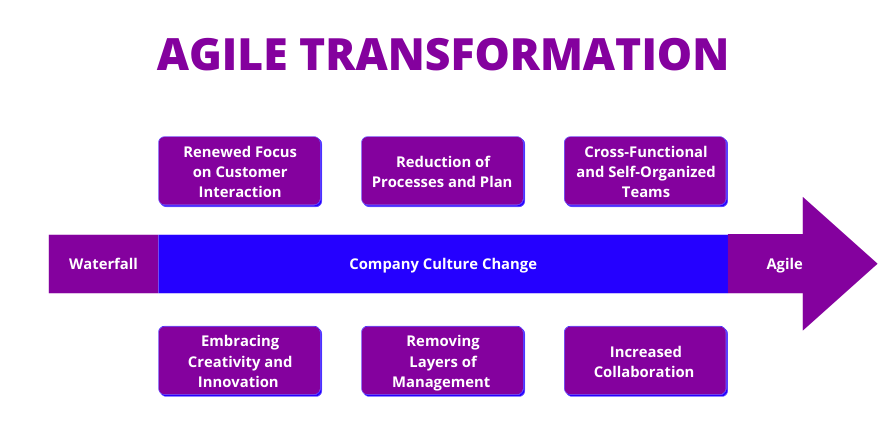
Case Studies: Successful Agile Transformation in IT
Agile transformation has driven notable success for many IT organizations worldwide. Let’s take a deeper dive into some of the key cases that highlight the impact Agile practices can have on IT project management.
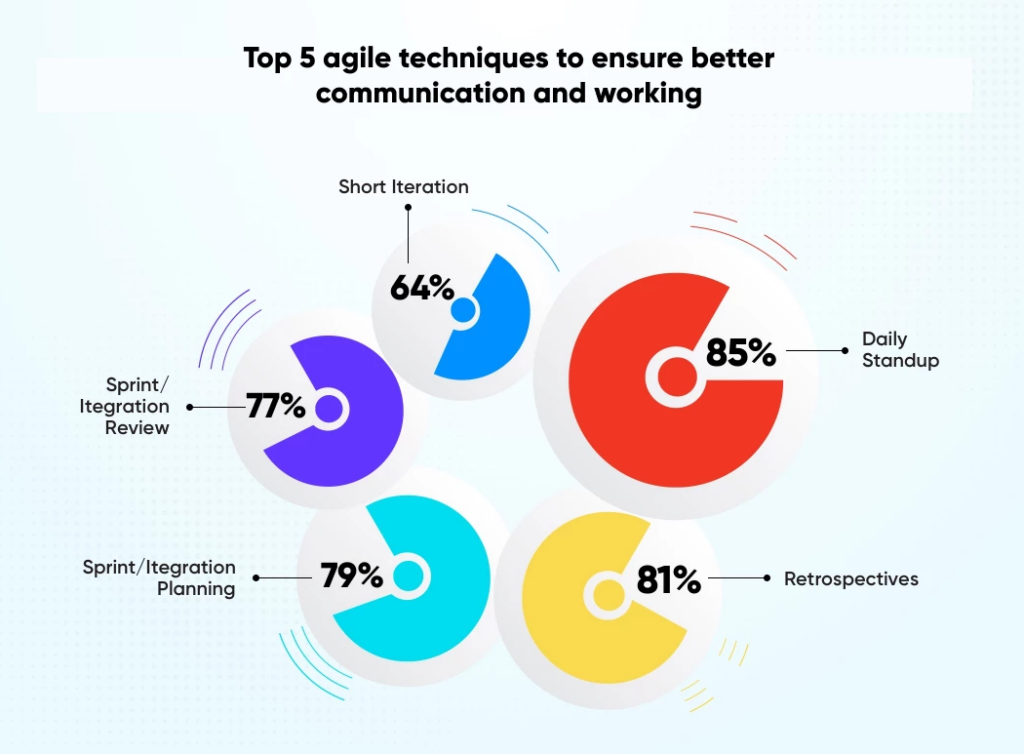
Spotify: Redefining Product Development Through Agile Tribes and Squads
Spotify is a prime example of an organization that has fully embraced Agile at scale. Facing rapid growth and a fast-evolving competitive landscape, Spotify realized that traditional project management methodologies would no longer suffice. They needed an approach that allowed for both flexibility and speed while maintaining product quality.
- Challenge: Spotify’s increasing number of users and rapid expansion made it difficult to scale development efficiently. The company struggled to maintain agile delivery while keeping teams aligned with business goals.
- Agile Transformation: Spotify adopted a unique tribes and squads model, a scaled Agile framework that allowed independent, cross-functional teams (squads) to operate like mini-startups. These squads focused on specific features, working autonomously while aligning with overall company goals through tribes. They also implemented Scrum and Kanban in these squads, providing flexibility based on the team’s needs.
- Results: The introduction of this Agile framework allowed Spotify to innovate faster, deliver new features more frequently, and create a scalable structure to manage rapid growth. For instance, the Discover Weekly feature was developed and released in record time thanks to this transformation, and Spotify continues to be one of the leading innovators in the music streaming industry.
IBM: Enterprise-Wide Agile Transformation for Faster Time-to-Market
IBM, a technology giant, underwent a major Agile transformation to keep up with the demand for innovative enterprise solutions and cloud services. The company struggled with long release cycles and slow responses to customer needs due to legacy processes and siloed teams.
- Challenge: IBM faced difficulties with its waterfall-driven project management approach. Complex projects had long lead times, limited adaptability, and frequent delays in delivering critical business solutions to customers.
- Agile Transformation: IBM embarked on a global Agile transformation initiative, beginning with a few pilot teams in its software development division. These teams adopted Scrum and later scaled Agile across the enterprise using the Scaled Agile Framework (SAFe). In addition to Agile methodologies, IBM integrated DevOps into its process, enabling continuous integration and delivery (CI/CD) for faster feedback loops.
- Results: This Agile transformation resulted in a 30% reduction in time-to-market for IBM’s key products. Teams became more collaborative, with project transparency improving across the organization. Today, IBM leverages Agile practices in its AI, cloud, and enterprise software divisions, driving faster releases and greater customer satisfaction.
ING: Banking on Agile for Enhanced Customer Experience
ING, a multinational banking corporation, transformed its IT and business operations using Agile practices to better respond to the ever-changing financial landscape. The company sought to offer customers digital services that were quick, reliable, and easy to use, but their traditional hierarchical structures and rigid processes created roadblocks to achieving these goals.
- Challenge: As a financial institution, ING struggled with slow development cycles and a lack of innovation in the face of increasing competition from digital-first banks and fintech disruptors.
- Agile Transformation: ING implemented a full-scale Agile transformation across both IT and business functions. The company restructured teams into small, cross-functional squads that used Agile frameworks like Scrum and Kanban. They also introduced OKRs (Objectives and Key Results) to ensure that all squads were aligned with the overall business strategy.
- Results: ING’s Agile transformation led to faster time-to-market for new features and products. For example, ING developed and launched its highly successful mobile banking app much more rapidly than was possible under traditional methodologies. Additionally, customer satisfaction scores increased significantly, as the bank was able to respond to customer feedback in near real-time.
CISCO: Agile Transformation for Hardware and Software Development
As a global leader in networking hardware and telecommunications, Cisco faced the challenge of delivering complex hardware and software solutions to customers within ever-tightening timelines. The company’s traditional project management approach was becoming inefficient as the market demanded more rapid product innovation.
- Challenge: Cisco needed to reduce the time taken to launch new products, especially in a market where customer needs were changing rapidly, and competitors were innovating at faster rates.
- Agile Transformation: Cisco launched a large-scale Agile transformation across its hardware and software engineering teams. They adopted a combination of Scrum and Kanban methodologies to improve team collaboration and reduce the time taken to move from design to delivery. Additionally, they incorporated SAFe to scale Agile practices across departments and ensure alignment with company-wide goals.
- Results: Post-transformation, Cisco reduced its product development cycles by 40%, allowing the company to release new networking products and updates faster. The collaboration between teams improved significantly, and Agile practices helped streamline both hardware and software development, a unique challenge given the complex nature of Cisco’s product offerings.
General Electric (GE): Agile Transformation in Industrial IoT and Software Solutions
General Electric (GE), traditionally known for its heavy industrial products, embraced Agile to transform its IT operations and software development, particularly in the growing field of Industrial IoT (IIoT). The shift was driven by a need to innovate faster in a competitive market that demanded digital solutions for smart manufacturing and connected devices.
- Challenge: GE faced challenges in delivering IIoT solutions quickly and adapting to customer feedback due to their reliance on traditional, top-down project management processes.
- Agile Transformation: GE adopted Agile principles across its digital and software teams, combining Scrum with Lean principles to streamline development processes. Teams were encouraged to experiment, iterate, and fail fast, adopting a customer-centric approach to product development.
- Results: GE’s Agile transformation led to faster iteration cycles for their IIoT solutions, enabling them to better compete in the smart manufacturing space. The company reduced development lead times by over 20%, enabling quicker feedback from customers and faster product refinement.
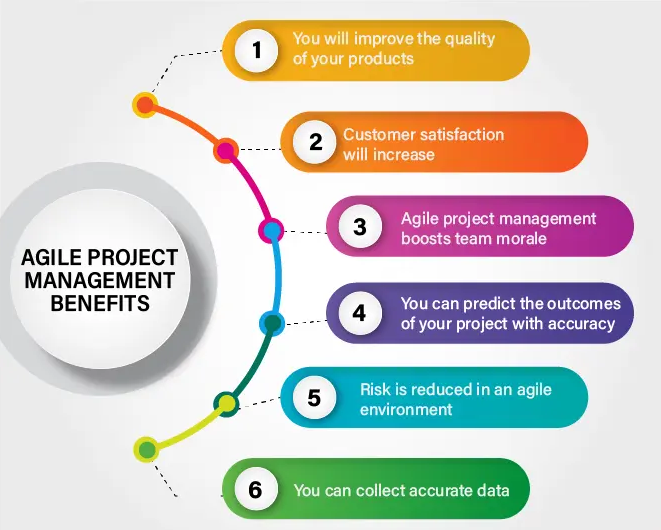
Future of Agile in IT Project Management
The future of Agile in IT project management is bright. Emerging trends include Agile scaling frameworks such as SAFe and LeSS, designed to help large organizations scale Agile practices. Furthermore, the integration of AI in Agile is set to revolutionize how projects are managed, bringing greater insights and efficiency to the process.
Conclusion
Agile transformation is no longer optional for IT organizations looking to remain competitive. By embracing Agile, IT leaders can ensure their teams are adaptable, collaborative, and capable of delivering high-quality products quickly. Organizations that prioritize Agile will be better positioned to navigate the fast-changing IT landscape.
To know more details about me feel free to visit https://vatsalshah.co.in or https://shahvatsal.com
